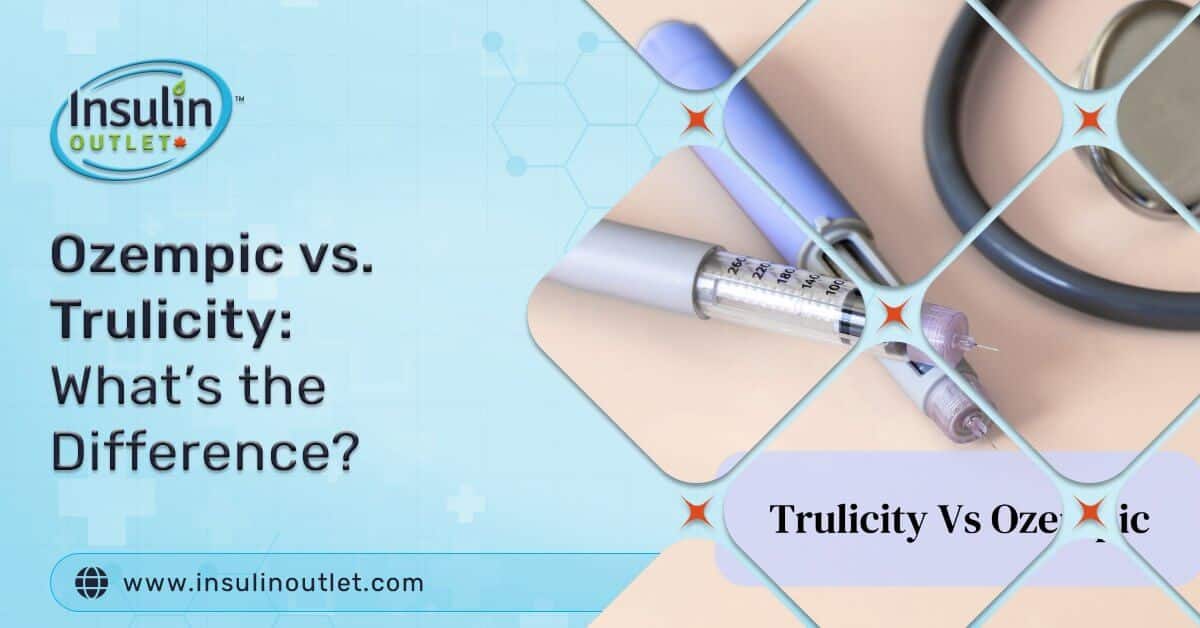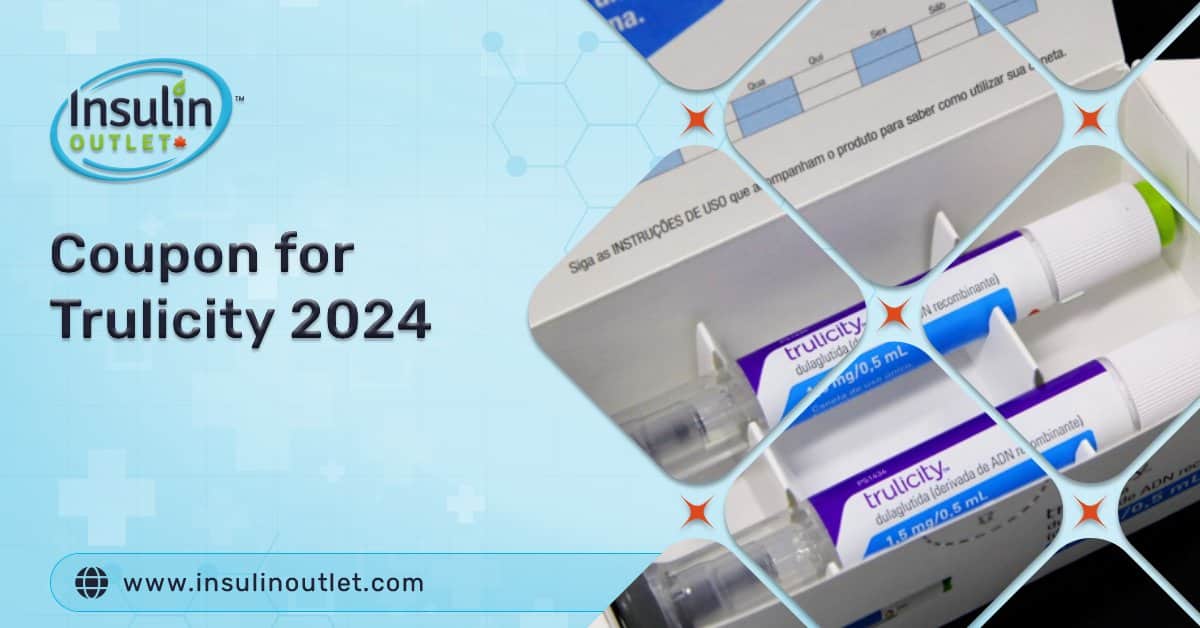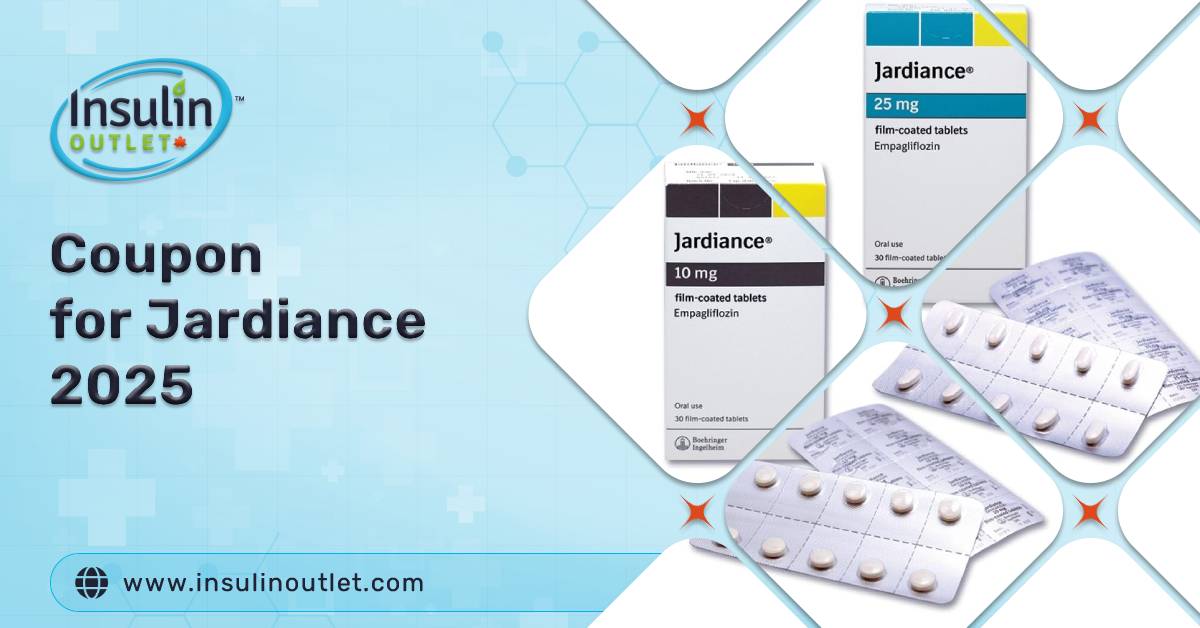
There are numerous variations of diabetes, but type 2 is by far the most common, with 90 to 95% of diabetes cases being type 2. Diabetes can lead to other serious complications. The sooner a person can manage their sugar levels or receive treatment for their diabetes, the better chance of preventing serious complications.
Ozempic and Trulicity are two common medications prescribed to treat type 2 diabetes. If this includes yourself and you have wanted to know more about Ozempic and Trulicity, you’re in the right place. This article will explain the similarities and critical differences between Ozempic and Trulicity.
Table Of Contents
ToggleWhat does Ozempic and Trulicity do? Are they the Same?
Ozempic and Trulicity have been approved by the Food and Drug Administration (FDA) to treat type 2 diabetes. They are self-injectable diabetes drugs, not insulin. With diet and exercise, both medications can improve blood sugar levels. While both drugs have been approved to treat type 2 diabetes, neither drug has been approved for the treatment of type 1 diabetes.
Ozempic and Trulicity work by stimulating insulin secretion and lowering glucagon secretion, lowering blood glucose levels. They delay gastric emptying, which helps control the appetite and postprandial blood sugar levels. This helps with losing weight, which benefits people with type 2 diabetes.
Both medications are also FDA-approved to reduce the risk of heart attacks, strokes, and death from heart disease.
While neither medication has been approved for weight loss, both Ozempic and Trulicity have been known to reduce appetite, which can eventually cause weight loss.
Ozempic and Trulicity Forms and Strengths
Ozempic is a medication you inject yourself with using a pen (similar functionality to Fiasp Flextouch and Apridra’s Solostar pens). Ozempic comes in two different forms: 2 mg/1.5 mL and 4mg/3mL of the drug, but they’re designed to give different doses. While both pens can be used multiple times, the number of times a pen can be used depends on which you’re using. The pen with the smaller doses can be used four to six times. The pen with the more significant amount should only be used if you need a higher dose to control your blood sugar levels. Ozempic pens should never be shared, and a new needle is required with each injection.
Trulicity contains dulaglutide’s active drug and comes as a liquid solution inside prefilled, single-dose disposable pens. The Trulicity pens come in two strengths: .75 mg of dulaglutide in .5 mL of solution and 1.5 mg of dulaglutide in .5 mL of solution. There is only one dose in each pen; they are designed to deliver the entire drug in one injection. A new pen is required for each amount.
How Are Ozempic and Trulicity Similar?
With both of these medications treating such a severe condition, they have quite a few similarities:
- Government Authorization: Both medications are FDA-approved for treating type 2 diabetes and heart disease.
- Drug Class: Both medications are in the Glucagon-like peptide 1 (GLP-1) receptor agonist.
- Brand/Generic Status: Neither medicine is available in generic form.
- Administration: Both drugs are in a pen injection form for self-injection once a week.
- Treatment Duration: The length of treatment varies for both medications.
- Treatment Age: Only adults 18 years and older can take the medicines.
- Affordability: Insurance typically covers both drugs, including Medicare Part D.

- Side Effects: The same side effects are possible with either drug: nausea, vomiting, diarrhea, abdominal pain, constipation, low blood sugar, decreased appetite, fatigue, indigestion.
- Pregnancy: There is limited data on Ozempic and Trulicity and their reaction to pregnancy. It is unknown if it’s safe to use either of these drugs while pregnant.
- Foods to Avoid: You need to avoid no food while on either medication; however, a proper diet is highly suggested (See Foods to Avoid with Ozempic and Trulicity in our Resources section). However, you should limit alcohol intake with both. Both medicines can cause low blood sugar. Combining alcohol and the drug could cause severe or prolonged low blood sugar.
- Boxed Warnings: A history of medullary thyroid carcinoma or multiple endocrine neoplasia syndrome type 2 prevent you from taking either medication. There is an increased risk of thyroid tumors.
- Other Warnings: Both drugs can cause pancreatitis, kidney problems, and diabetic retinopathy. If you have had pancreatitis, kidney problems, or received a diagnosis of diabetic retinopathy in the past, taking Ozempic or Trulicity could worsen your condition.
How are Ozempic and Trulicity Different?
We’ve noted the similarities between the two drugs. Now let’s note the differences:

- Active Drug: The active drug in Ozempic is semaglutide, and the active drug in Trulicity is dulaglutide.
- Dosage: Ozempic requires less dosage. It starts at .25 mg once weekly with the option to increase the dosage to .50 after four weeks if necessary. Trulicity starts at .75 mg once weekly, with the opportunity to rise to 1.5 mg if needed. The maximum recommended dosage for Ozempic is 1 mg weekly and 1.5 mg for Trulicity. See more about dosage in Drug Forms and Strengths.
- Cost: An Ozempic prescription is approximately $970; it can be purchased for $711 with a SingleCare Ozempic discount coupon. Trulicity’s medication can be around $2,000, but only $1,432 with the SingleCare discount at participating pharmacies. How much you pay depends on your insurance coverage. You can find the most affordable Ozempic and Trulicity pens through Insulin Outlet. Our Canadian medication is much cheaper then American medicine found at the local drugstore.
- Other Warnings: Trulicity can sometimes cause serious side effects in your stomach or intestines (severe gastrointestinal disease). The stomach cannot usually empty when you have gastroparesis. Trulicity has not been studied in people with severe gastrointestinal disease and is not recommended.
Trulicity Dulaglutide
$294.99Should You Talk to Your Doctor About Ozempic or Trulicity?
Talk to your physician about treating type 2 diabetes with Ozempic or Trulicity. Your doctor would know best based on your medical history if one of these medications would be a good choice for you. While both medications work the same, some people find Trulicity pens more straightforward to use than Ozempic pens. Please ensure your doctor has all of your medical histories; that’s the only way they will assess your lifestyle and recommend proper treatments.
What About Switching Medications?
If you’re currently taking either Ozempic or Trulicity and wondering if you need to switch medications, this may be possible. While it’s possible to switch between drugs, the likelihood of your doctor authorizing it is very slim. That is because the medications work in the same way. So rather than switch to a similar type of medication, your doctor may see the effectiveness of adding additional medicines to your treatment schedule.
Is Ozempic or Trulicity More Effective?
Head-to-head clinical trials give healthcare providers helpful information about how a treatment compares to another treatment. To make informed decisions for their patients, they need to compare medications across and within drug classes. Diabetics with type 2 diabetes have many treatment options. Although there are limited head-to-head clinical trials to take findings from, a few have been conducted between Ozempic and Trulicity.
Ozempic appeared to be better than Trulicity at reducing A1C, regulating A1C, and reducing weight in a 40-week analysis of 1,201 diabetics with type 2 diabetes.
Another head-to-head trial compared semaglutide (the active drug in Ozempic) with dulaglutide (in Trulicity) in patients with inadequately controlled type 2 diabetes. During the six-month study, semaglutide was superior to dulaglutide in improving glycaemic control and weight loss in diabetic patients (type 2), giving them a substantial advantage in clinically meaningful glycaemic targets and weight loss, and with the same safety profile as dulaglutide.
Your doctor will determine the most effective drug for you. They will consider your medical conditions, medical history, and other medications you are also using.
Summary
While Ozempic and Trulicity are in the same drug class, have been approved by the FDA to treat similar conditions, and are administered the same, they are two different medications. They treat type 2 diabetes and heart disease and have very similar side effects. As with any drug, your health care provider needs to know your medical history to determine if a drug should be administered.
Neither medication comes in a generic form, and although most insurances cover both medicines, how much you pay for the medication relies on your insurance coverage. However, Insulin Outlet does offer incredible prices on both Ozempic and Trulicity.

There is no definitive data on how either treatment reacts to pregnancy. They could cause fetal harm. Consult your healthcare provider if you are pregnant or trying to get pregnant.
Alcohol can cause low blood sugar. It is suggested to avoid alcohol while using either Ozempic or Trulicity, as the medications also cause low blood sugar. Combining alcohol and the drug could cause severe or prolonged low blood sugar.
While the limited head-to-head trials have favored Ozempic as more effective than Trulicity, your doctor will know the best medication for you. Consult your doctor before taking any medication.
Share:












